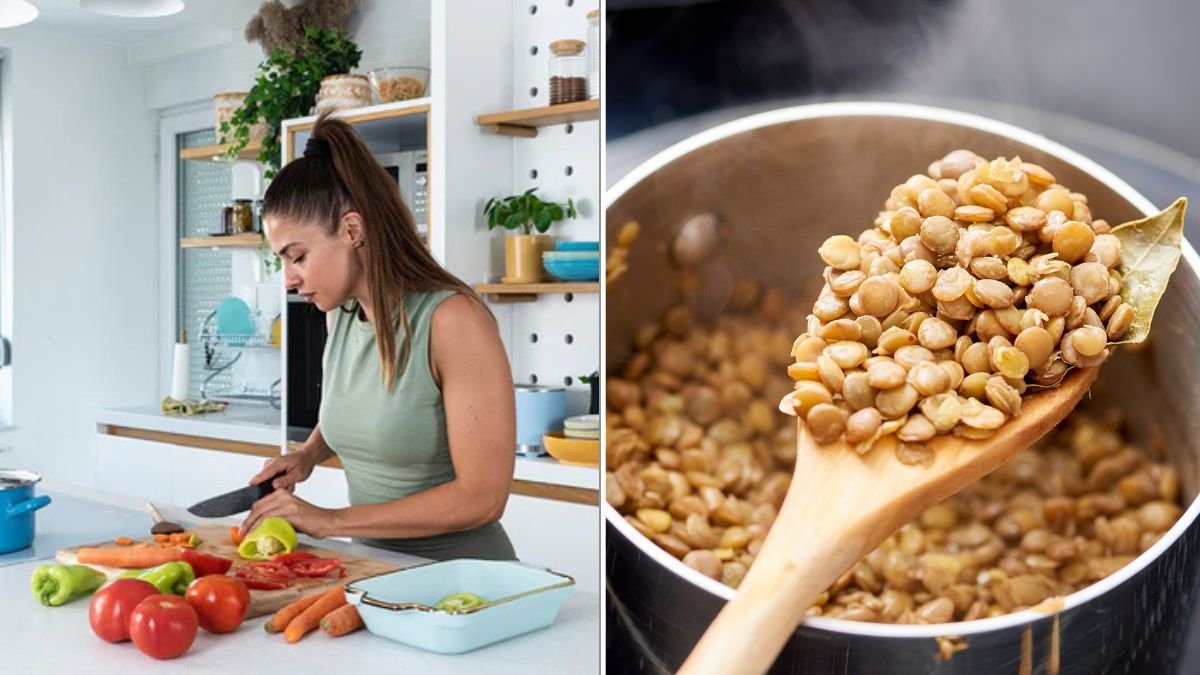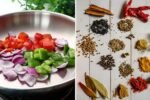Sambar is one of South India’s most iconic dishes—a flavorful, tangy, and comforting lentil stew that pairs perfectly with steamed rice, idli, dosa, or even plain snacks. Among the various vegetables used in sambar, drumsticks (moringa pods) are a popular choice for their unique flavor, nutritional benefits, and ability to absorb the rich sambar spices beautifully. If you’ve ever thought making sambar is complicated, this 6-step guide will show you how to cook drumstick sambar easily at home, delivering authentic taste without stress.
Step 1: Gather Fresh Ingredients

The first step to cooking delicious drumstick sambar is selecting fresh and high-quality ingredients. Here’s what you’ll need for a classic drumstick sambar serving 3–4 people:
Lentils & Vegetables:
- 1 cup toor dal (pigeon peas)
- 2–3 drumsticks, cut into 2–3 inch pieces
- 1 medium tomato, chopped
- 1 small onion (optional)
- 1–2 green chilies, slit
- 1/4 cup tamarind pulp
Spices & Seasonings:
- 1–2 tbsp sambar powder (store-bought or homemade)
- 1/4 tsp turmeric powder
- Salt to taste
For Tempering (Tadka):
- 2 tsp oil or ghee
- 1 tsp mustard seeds
- 1/2 tsp cumin seeds
- 2 dried red chilies
- A pinch of asafoetida (hing)
- 1 sprig curry leaves
Optional Garnish:
- Fresh coriander leaves, chopped
Pro Tip: Fresh drumsticks provide a tender, slightly fibrous texture, while dried tamarind or paste adds tangy richness to the sambar.
Step 2: Cook the Lentils
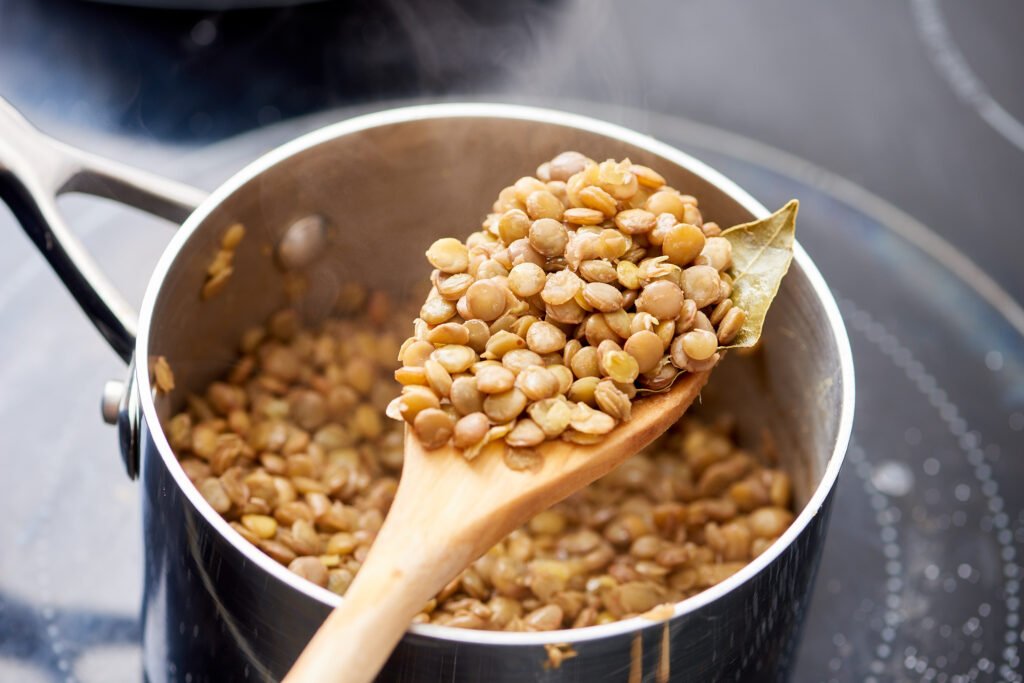
To get a smooth, creamy base for your sambar, the lentils need to be cooked thoroughly.
Steps:
- Wash 1 cup of toor dal thoroughly under running water until the water runs clear.
- Pressure cook the lentils with 2–3 cups of water and 1/4 tsp turmeric powder for 3–4 whistles, or until soft and fully cooked.
- Mash the cooked lentils slightly using a spoon or whisk to create a creamy consistency.
Tip: If you don’t have a pressure cooker, boil the lentils in a pot for 25–30 minutes until soft, adding water as needed.
Step 3: Prepare the Tamarind Base
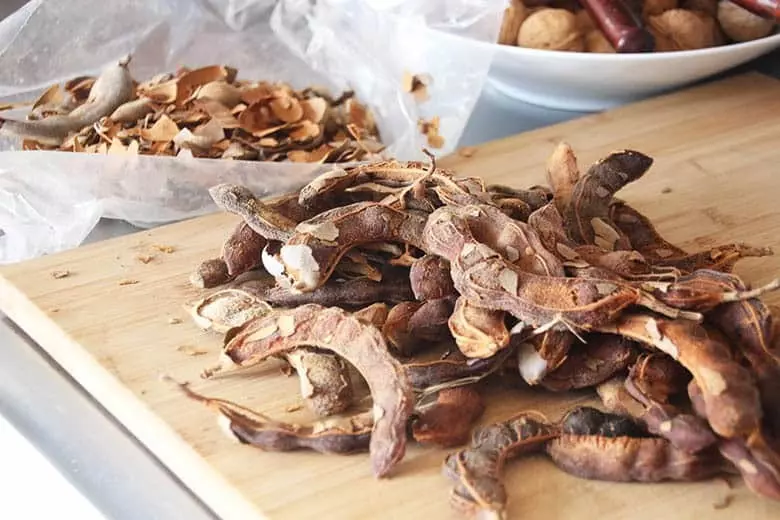
Tamarind gives sambar its signature tangy flavor. Preparing it correctly is key for authentic taste.
Steps:
- Soak a small tamarind ball (about the size of a walnut) in 1/2 cup warm water for 10–15 minutes.
- Mash and strain to extract tamarind juice, removing fibers and seeds.
- If using tamarind paste, dissolve 1–2 tablespoons in 1/2 cup warm water.
Pro Tip: Adjust the tamarind quantity according to your taste preference for tanginess.
Step 4: Cook the Drumsticks and Other Vegetables
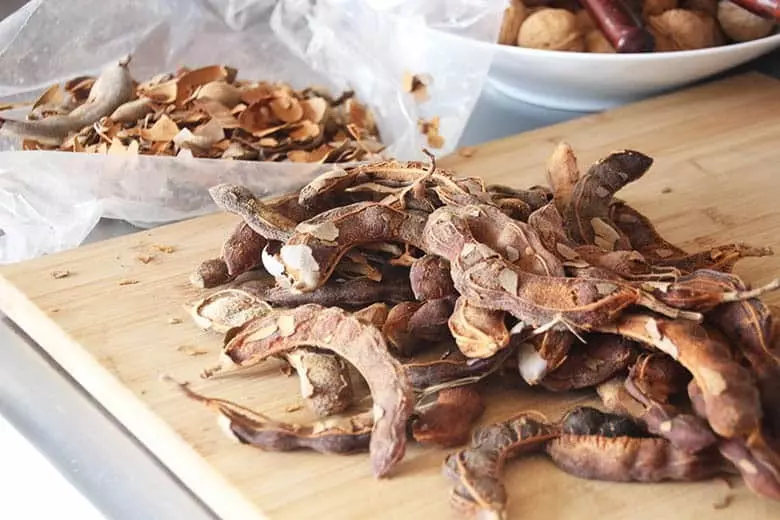
Drumsticks take slightly longer to cook than other vegetables, so it’s important to start with them first.
Steps:
- In a medium pot, bring 1–2 cups of water to boil.
- Add the drumstick pieces and slit green chilies. Simmer for 7–10 minutes until they start to become tender but not mushy.
- Add chopped tomatoes and onion (if using) and cook for another 5 minutes until the vegetables soften.
Pro Tip: Cut drumsticks into uniform pieces to ensure even cooking. Remove the fibrous outer layer if preferred for easier eating.
Step 5: Combine Lentils, Tamarind, and Spices
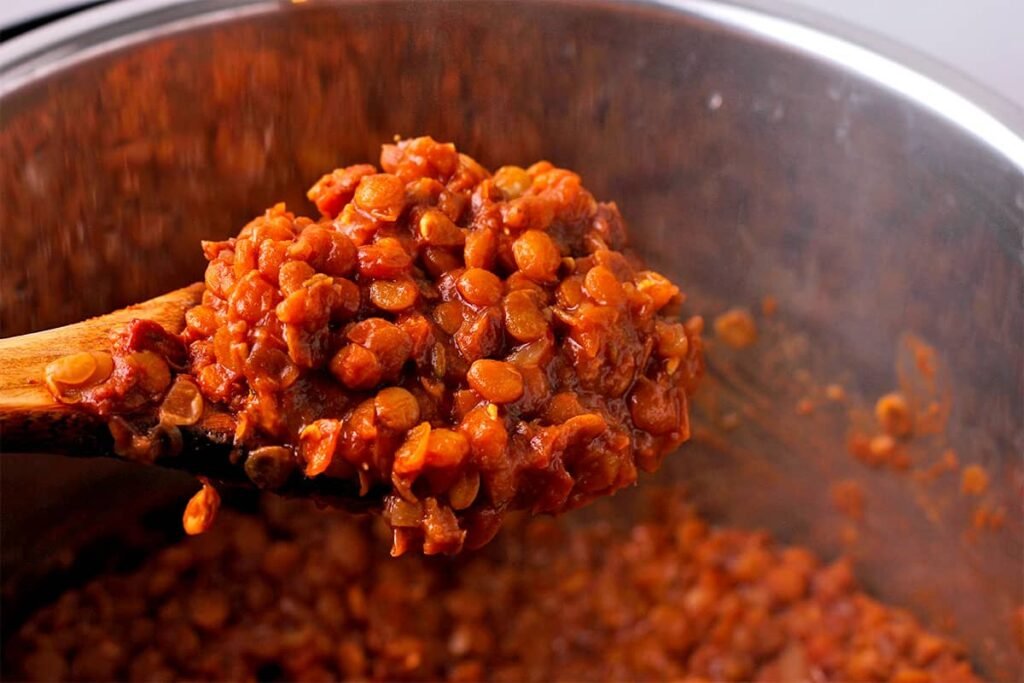
Steps:
- Add the cooked and slightly mashed lentils to the simmering vegetables.
- Pour in the prepared tamarind juice. Stir well to combine.
- Add sambar powder and salt. Mix thoroughly.
- Bring the sambar to a gentle boil and simmer for 5–7 minutes, allowing the flavors to meld.
- Taste and adjust salt, tamarind, or spice levels according to preference.
Pro Tip: Simmering sambar briefly after adding spices enhances the aroma and depth of flavor without overcooking the drumsticks.
This step brings together all the flavors for a rich, aromatic sambar.
Steps:
- Add the cooked and slightly mashed lentils to the simmering vegetables.
- Pour in the prepared tamarind juice. Stir well to combine.
- Add sambar powder and salt. Mix thoroughly.
- Bring the sambar to a gentle boil and simmer for 5–7 minutes, allowing the flavors to meld.
- Taste and adjust salt, tamarind, or spice levels according to preference.
Pro Tip: Simmering sambar briefly after adding spices enhances the aroma and depth of flavor without overcooking the drumsticks.
Step 6: Temper (Tadka) for Aroma and Flavor
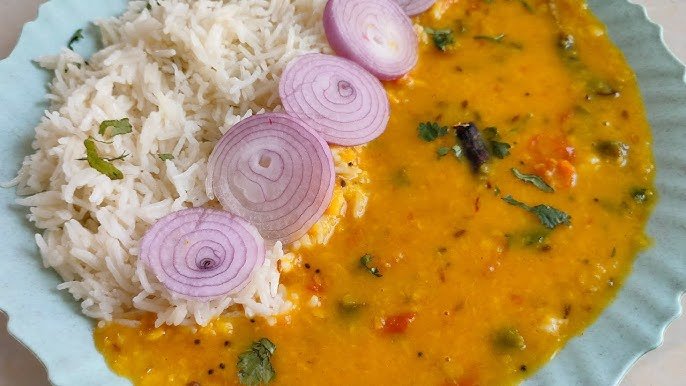
Tempering, or tadka, adds a finishing touch to sambar, imparting a burst of flavor and aroma.
Steps:
- Heat oil or ghee in a small pan over medium heat.
- Add mustard seeds and wait until they start to splutter.
- Add cumin seeds, dried red chilies, curry leaves, and a pinch of asafoetida. Fry for a few seconds until aromatic.
- Pour the tempering over the simmering sambar. Stir gently.
- Garnish with freshly chopped coriander leaves.
Tip: Add the tadka just before serving to retain maximum aroma and flavor.
Serving Drumstick Sambar
Drumstick sambar is incredibly versatile and can be served in various ways:
- With Steamed Rice: Pour sambar over hot rice and enjoy with a dollop of ghee.
- With Idli or Dosa: Serve as a side for South Indian breakfast items.
- As Soup: Enjoy a small bowl on its own as a warming, nutritious soup.
Pro Tip: Serve hot for the best taste and aroma. A small side of papad or pickle complements the meal perfectly.
Tips for Perfect Drumstick Sambar
- Consistent Drumstick Size: Ensures even cooking and easier eating.
- Adjust Tamarind & Spice: Modify tamarind juice and sambar powder according to personal taste.
- Cook Lentils Well: Well-cooked, slightly mashed lentils give sambar its creamy texture.
- Don’t Overcook Drumsticks: Tender-crisp drumsticks retain flavor and texture.
- Use Fresh Curry Leaves: Fresh curry leaves elevate flavor compared to dried ones.
- Simmer Gently: Avoid high heat after adding tamarind to prevent bitterness.
Health Benefits of Drumstick Sambar
Drumstick sambar is not only delicious but also packed with nutrients:
- Drumsticks (Moringa Pods): Rich in vitamin C, iron, and calcium; promote digestion and boost immunity.
- Toor Dal: Provides protein and fiber, making the sambar filling and nutritious.
- Tamarind: Aids digestion and adds a tangy flavor without extra calories.
- Spices: Ingredients like cumin, mustard seeds, and turmeric have anti-inflammatory and digestive benefits.
Enjoying drumstick sambar is both comforting and healthy—a perfect combination for everyday meals.
Variations of Drumstick Sambar
Sambar is a versatile dish, and you can experiment with variations to suit taste and dietary needs:
- Vegetable Mix Sambar: Add pumpkin, okra, drumstick leaves, or carrots for extra nutrition.
- Spicy Sambar: Increase green chilies or black pepper for added heat.
- Instant Sambar: Use pre-made sambar powder and tamarind paste for quick preparation.
- Low-Sodium Version: Reduce salt and focus on spices and tanginess for flavor.
Experimenting with these variations can keep your sambar exciting and flavorful.
Conclusion
Cooking drumstick sambar at home doesn’t have to be intimidating. By following this 6-step guide, you can prepare a flavorful, authentic South Indian sambar that’s perfect for rice, idli, dosa, or even as a comforting soup. The combination of tender drumsticks, perfectly cooked lentils, tangy tamarind, and aromatic spices creates a dish that’s both delicious and nutritious.
Key Takeaways:
- Wash and cook lentils properly for a creamy base.
- Prepare fresh tamarind juice for authentic tanginess.
- Cook drumsticks and vegetables evenly without overcooking.
- Combine lentils, tamarind, and sambar powder, then simmer to develop flavors.
- Perform a final tempering (tadka) just before serving to enhance aroma.
- Garnish with fresh coriander and serve hot for best results.
With these simple steps, you can enjoy homemade drumstick sambar that rivals restaurant-quality taste, bringing warmth, flavor, and nutrition to your dining table. Once mastered, this recipe becomes a go-to comfort food that’s easy to prepare, healthy, and full of authentic South Indian flavor.
